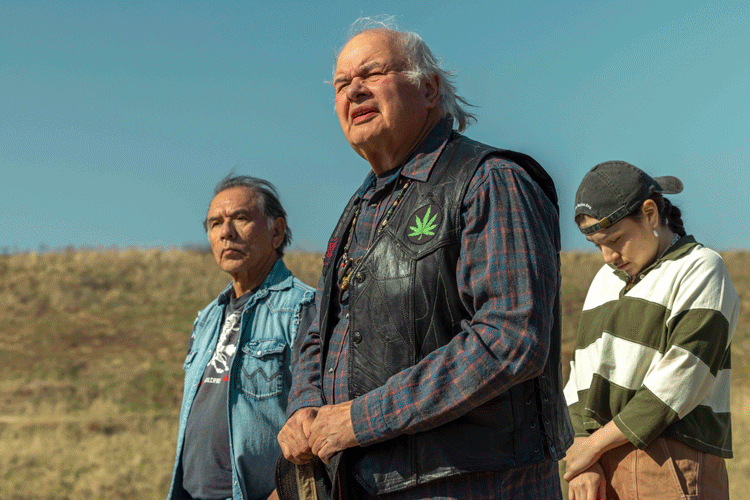PBS Game Show Charts New Territory : Television: ‘Carmen Sandiego’ packs geography lessons into an MTV-era pop program targeting post-’Sesame Street’ viewers.
News flash: A nasty criminal has stolen George Washington’s nose off Mount Rushmore!
The contestant who figures out who took it and where it has been hidden wins a free trip anywhere in the continental United States.
Another TV game show? Yes, but with a catch. It’s an educational tool in disguise.
“Where in the World Is Carmen Sandiego,” a children’s series based on the Broderbund computer game of the same name, premieres today at 5 p.m. on public-television stations KCET Channel 28 in Los Angeles and KPBS Channel 15 in San Diego, and at 4:30 p.m. on KVCR Channel 24. It is aimed at fourth- through seventh-graders.
Like the computer game, the questions and puzzles in PBS’ “Carmen Sandiego” are based on geography. Produced by WGBH in Boston and WQED in Pittsburgh, the program casts its young contestants in the role of detectives who must figure out “where in the world” criminals--who are part of a gang run by a woman named Carmen Sandiego--have hidden their loot.
Seeking a vehicle to teach geography, PBS opted for a game show for two reasons, said Kate Taylor, co-executive producer and director of children’s and family programming at WGBH.
“Research shows that kids adore game shows,” Taylor said. And, she said, game shows are relatively inexpensive to produce, a plus at a time when public television is suffering from recession-related drops in corporate funding.
“Carmen Sandiego” is structured around the idea of a 1940s Hollywood-style detective agency: “The Chief,” played by Lynne Thigpen, is the agency’s tough-talking head. She appears on a video screen, urging the young “gumshoes” to hurry and find the criminals, and berating the show’s host, Greg Lee, for moving too slowly.
“We have a lot of comedy, animation and silliness, which we felt was essential to be able to compete,” said senior producer Howard Blumenthal. “We intentionally designed the show to have a really fast pace, (which) that age group is accustomed to from watching MTV.”
The idea, according to Blumenthal and others involved with the show, is to create an atmosphere of enthusiasm for geography, while not making the show explicitly instructional.
According to Jay Rayvid, co-executive producer and senior vice president of WQED, each program contains about 70 pieces of geographical information, a subject about which most American children know very little. But the facts--in the form of puzzles and clues--are slipped in, and are surrounded by music, skits and hype.
Tonight, “Carmen Sandiego” will be broadcast not only in its regular 5 p.m. slot, but also at 8 p.m., when KCET and KPBS will show two half-hour episodes.
PBS is relying on the prime-time splash to promote the show because, until two weeks ago, the network did not have funding for a promotional budget for the series, according to executives involved.
Earlier this month, Toyota Motor Corp. donated $750,000 to the program, which will be used for promotion. But that still leaves the program short another $750,000, which Rayvid said the producers need to improve the graphics and animation used on “Carmen,” and to develop its second season.
The remainder of the project’s funding came from PBS and the Corporation for Public Broadcasting, which together donated $3.1 million. Broderbund Software, which receives a credit on the program as the developer of the game on which the show is based, did not donate cash, but did allow PBS to use the name and concept for free.
And that, according to Rayvid, was a very significant contribution.
“ ‘Carmen Sandiego’ is a pre-sold concept, which is very important in public television, because we don’t have an advertising budget,” Rayvid said. “Kids use (the computer game) in school and at home.”
Rayvid said that officials at PBS did not consider Broderbund’s cooperation to pose a conflict of interest under the government-funded network’s underwriting guidelines, because the software company did not contribute money.
“It’s not different than if we based a program on a book,” Rayvid said.
“Carmen Sandiego” exemplifies several trends in public television under the guidance of PBS programming chief Jennifer Lawson.
With Blumenthal at the producing helm, the program is one of the first to be produced under Lawson’s plan to draw on the resources of commercial television to add spice to public-TV shows. Blumenthal, whose father produced the old “Concentration” game show for NBC, has a history of producing and consulting on network game shows.
And the program’s bold positioning in a time slot unfamiliar to PBS’ typical viewers and its orientation toward a post-”Sesame Street” audience group reflect Lawson’s promise to aggressively seek new adherents.
“Our intention is to have public television reach a new generation of viewers,” Lawson said. “We need to reach out to older children, as well as adults.”
Lawson said that “Carmen Sandiego,” with its game-show format and fast pace, was an example of how public television could borrow from its commercial counterpart without giving up integrity.
More to Read
The complete guide to home viewing
Get Screen Gab for everything about the TV shows and streaming movies everyone’s talking about.
You may occasionally receive promotional content from the Los Angeles Times.






